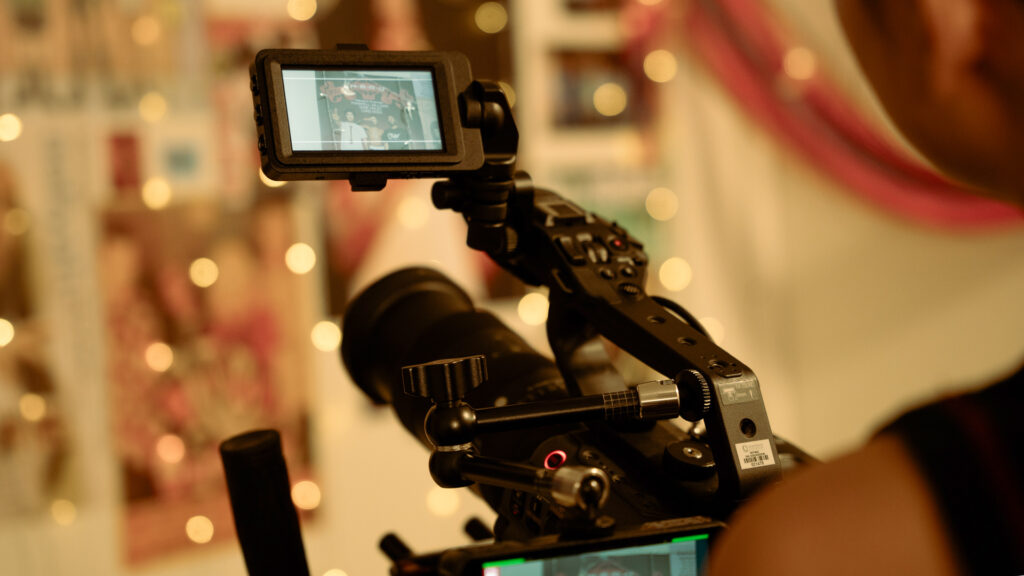Recently, we saw a behind the scenes image of The Matrix Resurrection set, and were stunned to see a SIGMA CINE lens on one of the drones. This one image led us to the aerial operator on the film, Dan Godar. Along with The Matrix Resurrection, Dan has worked on some phenomenal blockbusters such as Venom, Hobbs and Shaw, Jungle Cruise, and Jumanji. We were lucky enough to grab a moment of his time to talk about his aerial operating experience.
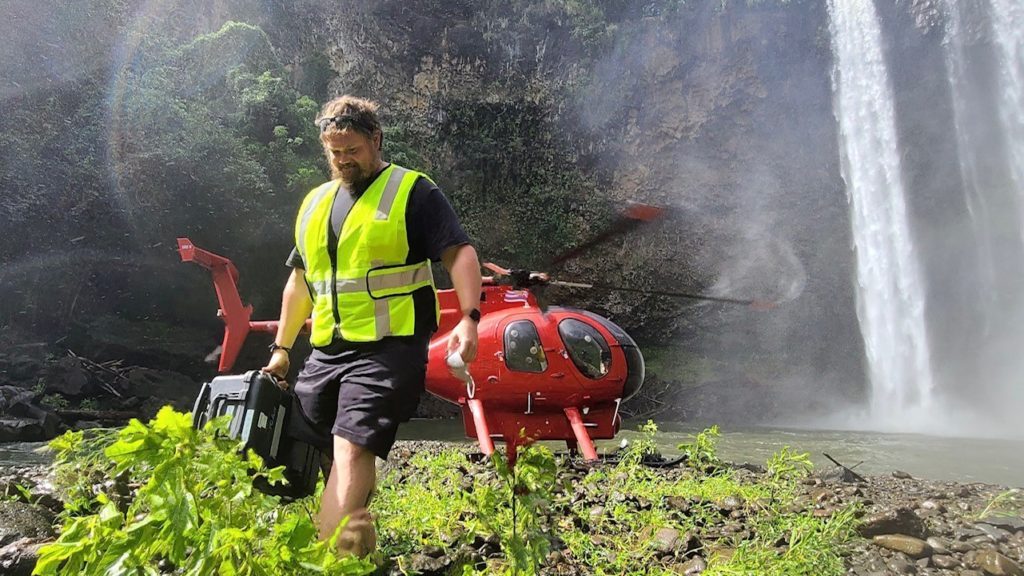
As a camera operator, how did you transition into aerial camera operating?
When I finally decided to pursue camera department as my career, I moved away from Minnesota and went to Los Angeles, as a lot of people do. I was PAing and ACing and doing whatever I could to pay rent. I remember going to an NAB in Vegas, and one booth had a super simple early iteration of a multi-rotor, and I fell in love. After I left that and started ordering parts and building simple quad copters with servo gimbals or hard mounted GoPro’s, and I would just go out and film.
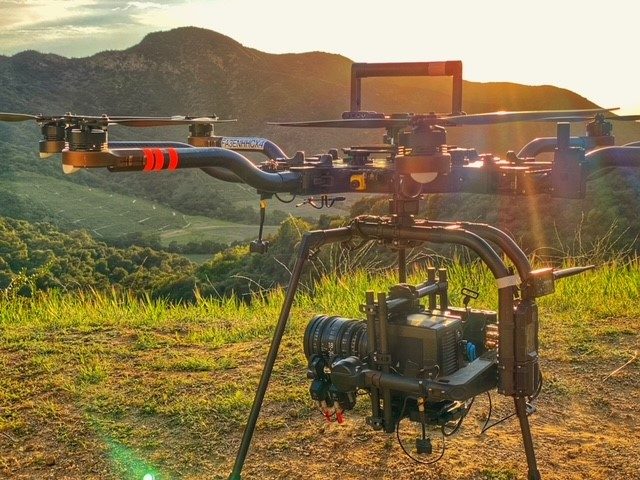
Once I was in that world, I basically had a massive stroke of luck. Someone found me and needed a Red camera flown, which wasn’t very common at the time. He introduced me to someone he knew as a gimbal expert, which sparked a great relationship with my friend Tony Thompson (who now is an owner at Hover Aerials). We hit it off and started working a lot together, leaning on each other whenever either one of us needed an operator or a pilot. He was working with another company at the time, and decided to bring me along to Aerial Mob, who was one of the original seven companies to get a part 333 waiver to fly legal drone flights in the industry.
I guess they liked my work, because I moved my way up within their ranks fairly quickly and got to work on some big features early on with them. I’ve maintained a great relationship with them, and am still one of their main operators and get to help them out on a lot of really fun and interesting projects. I’ve also been branching out more in the last few years and working on more traditional camera operating, as well as motion control, steadicam, Russian arms, and anything else that will move a camera in an untraditional way. I love working with and learning all the tools to help directors and DP’s move their lens in a way to uniquely and intimately tell their stories
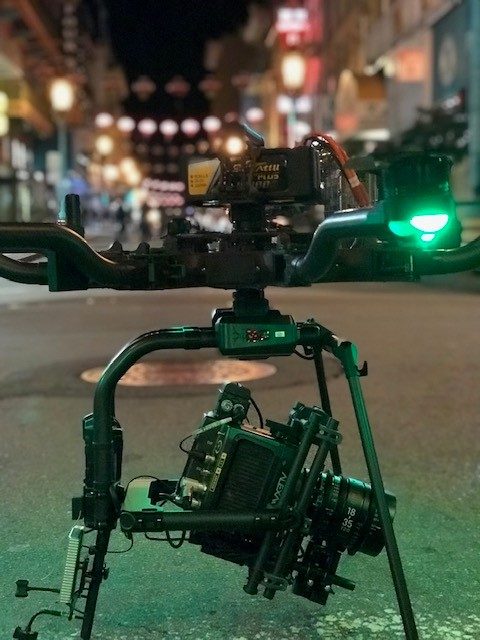
When it comes to cameras and lenses for aerial shots, what matters most?
Logistically, it’s all about size. We’re stuck to a certain weight per the FAA, so we’re always fighting camera/lens package vs battery/gimbal load. Arri coming out with the Mini and Mini LF was a game changer, and now with the new Red systems, it’s cutting weight down on the camera end considerably. If I can, I always want to match the lens that the main unit is using to help them out in the edit, but sometimes a discussion has to be had depending on what else the DP or director wants with the shot
You often work with SIGMA CINE lenses. Why do they work well for aerial drone work?
The SIGMA CINE lenses are really nice because they give such an even look to the footage. A lot of creatives like them as the drone lens because the footage cuts so well with so many other lenses, especially during action scenes when the edit is so quick. We love them because even the long SIGMA CINE 50-100mm T2 zoom is well within our weight limits, and gives us room to use a full FIZ setup, and throw on all the creature comforts extras for the AC to help us out on the day. I also like the price of the lenses (even though it’s all insured) because sometimes we throw that drone right at some explosive action.

What do you look for in a drone pilot?
Good drone pilots are hard to find and luckily I’ve been able to work almost exclusively with the best in the industry over the years. They really need to have a cinematic eye, the same as me, to be able to feel and time their position so I can make the shot. We’ll walk through and discuss a shot over and over, especially the one take shots on the bigger projects, but without that intuition to really know how the shot will develop, a bad pilot with the best operator could still completely blow a shot.
How do you plan out your shot?
Most of the time, at least on scripted projects, we will have at the very least a story board to get an idea from. We’ll have a discussion with the director and DP, and usually walk the shot a bit with them to really understand what they need. It’s easy to throw a drone up and get beautiful shots of something, but we really need to understand the story that’s trying to be told, and how we can help with that. Higher budget projects will sometimes have complete animatics that they’ve spent months developing, and those really help because we can see how they want the final shot to look like. Especially if what we’re shooting is mostly plates with a lot of CG added after the fact. Those help us out a lot.
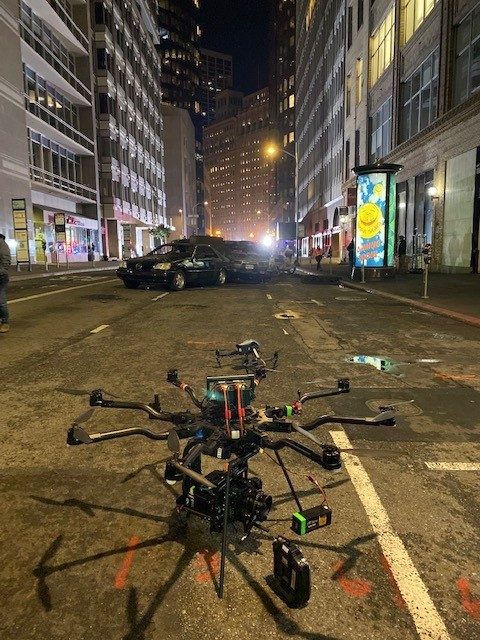
What’s the toughest shot you’ve had to pull off?
I’ve had some (logistically) simple shots become some real horror stories because of equipment failure. We’ve had video signals drop mid shot because of massive RF interference from other cameras, gear, cars, and just the surrounding environment.
Some notable tough shots for me usually involve catching up to, and then pacing a moving vehicle, because my pilot can’t take their eyes off of the drone, and I have to completely talk them into speed and position without them seeing the shot. We did a shot for Amazing Stories on Amazon Prime, where we had to dive from high up, split some trees on a narrow road, and catch up to and pace a greyhound bus on a certain window that an actor was sitting at. I’ll give all the props to my pilot Steve Blizzard on that one. Most other pilots we would have spent all weekend there, but I think he pulled it off after 3 tries, and the shot looks effortless and simple. So no one except us would ever know. There are countless other shots, but that one I remember being especially tough logistically.
Do you have any tips or advice for those looking to enter this field?
Good luck. There is a lot of competition, and a lot of really good companies out there. Work hard, practice your craft, and have a good attitude. I always try to come to set positive and upbeat, and I feel like people notice that.

What projects do you have coming up?
I have several upcoming projects I worked on including a movie with David Leitch and Jonathan Sela called Bullet Train coming hopefully sometime this year. We also just finished up a movie for Netflix called White Noise with Noah Baumbach and Lol Crawley and the amazing Bruce McCleery as our 2nd unit DP.
